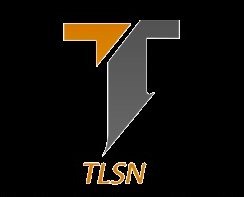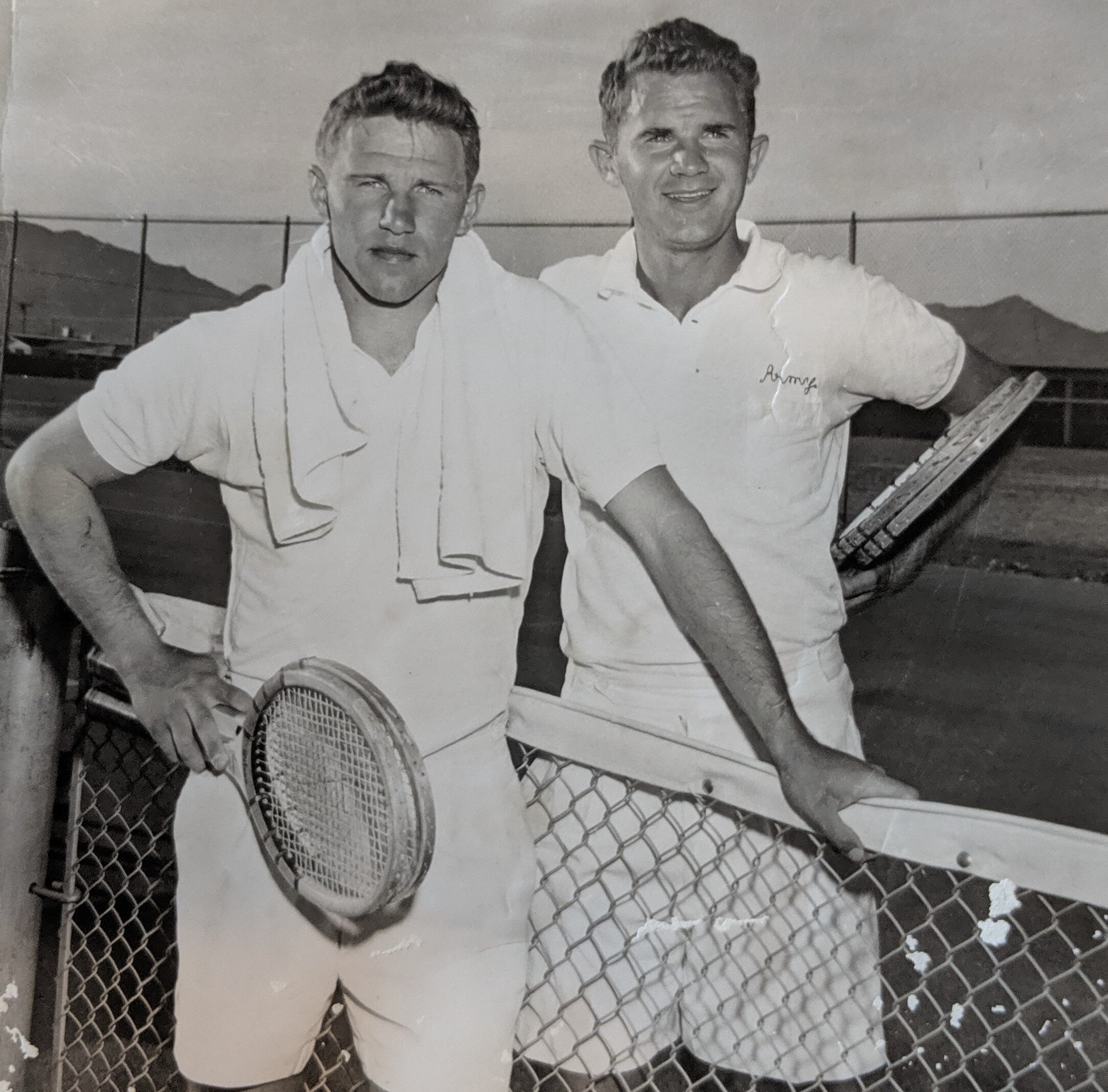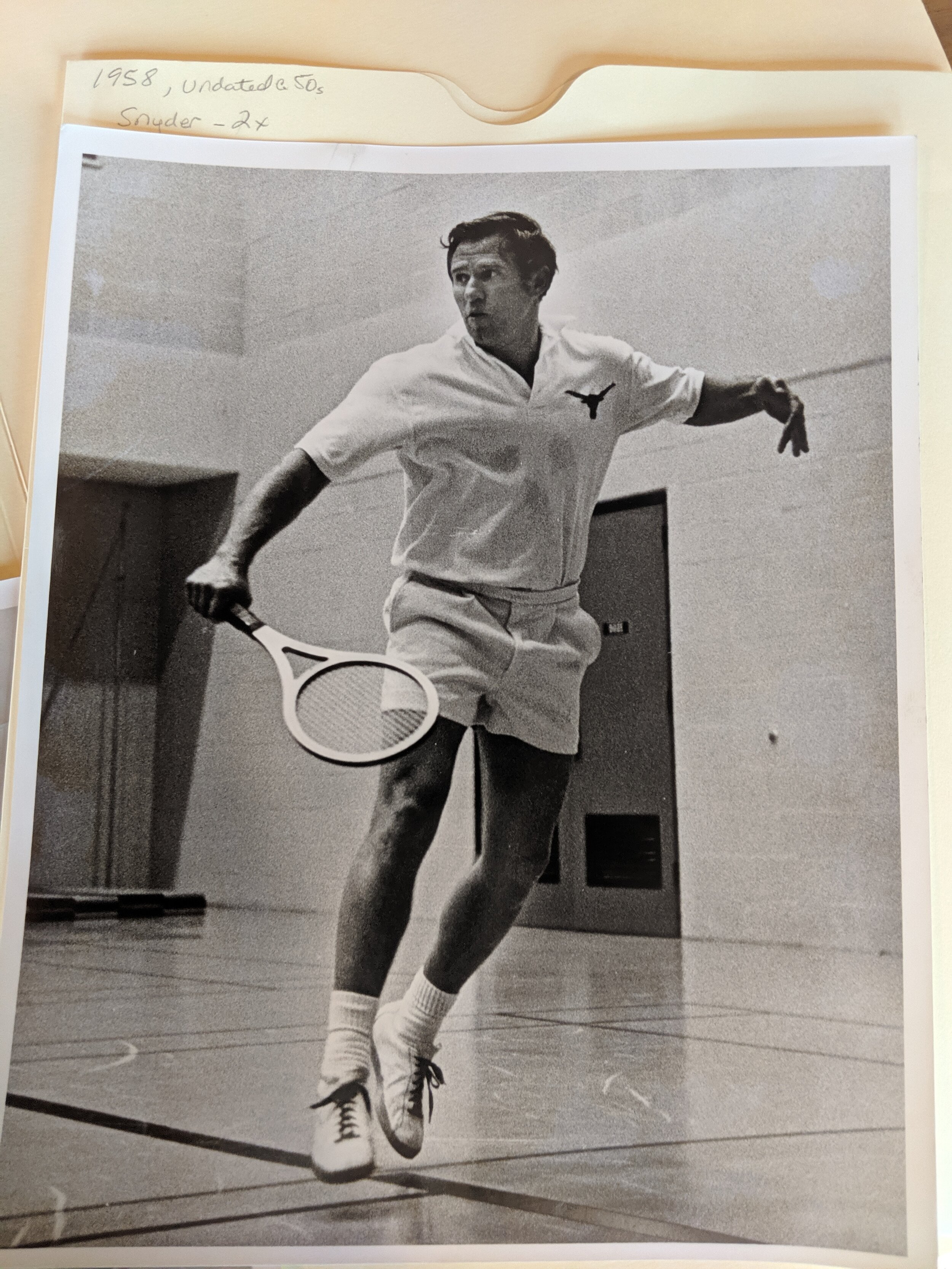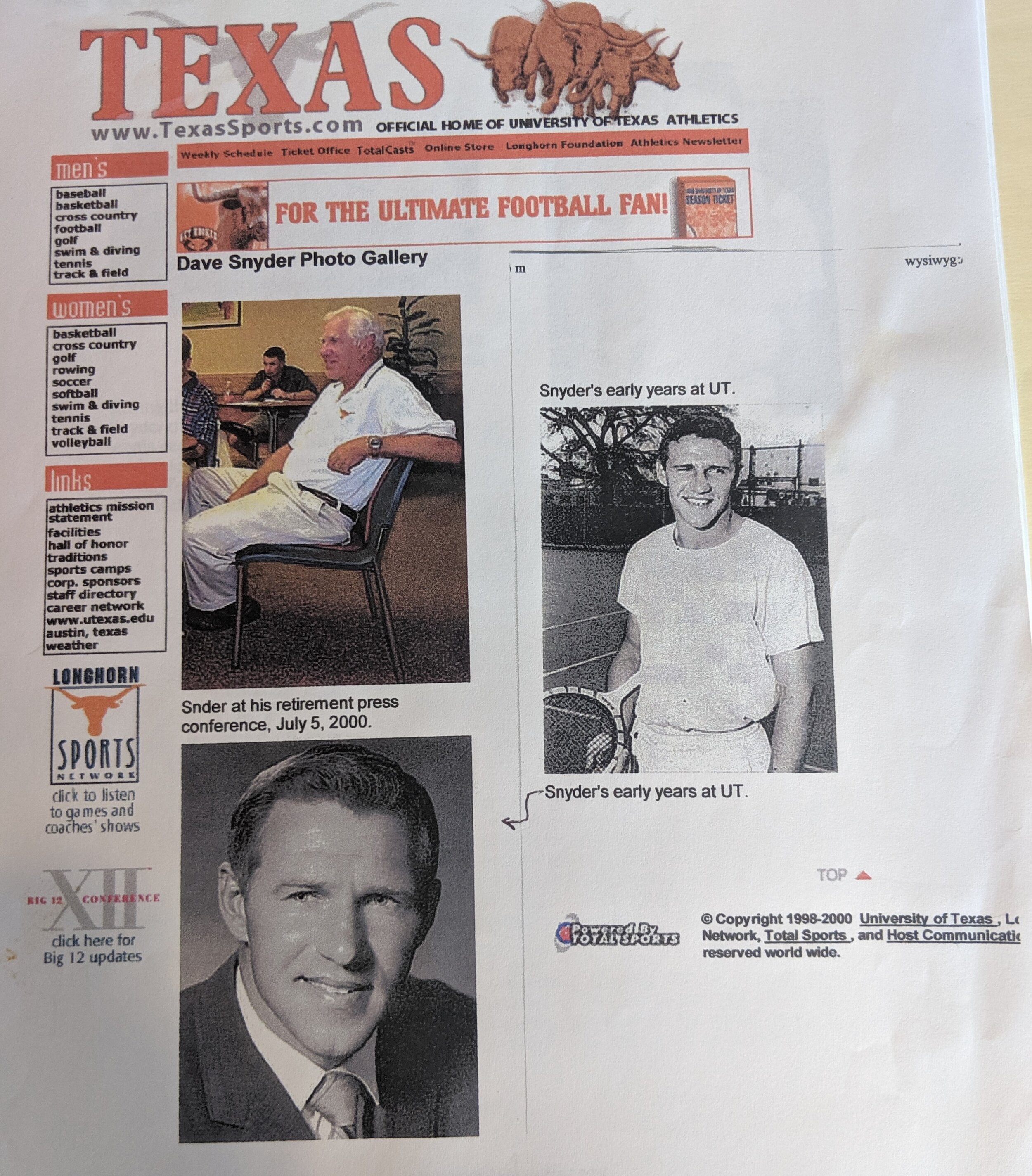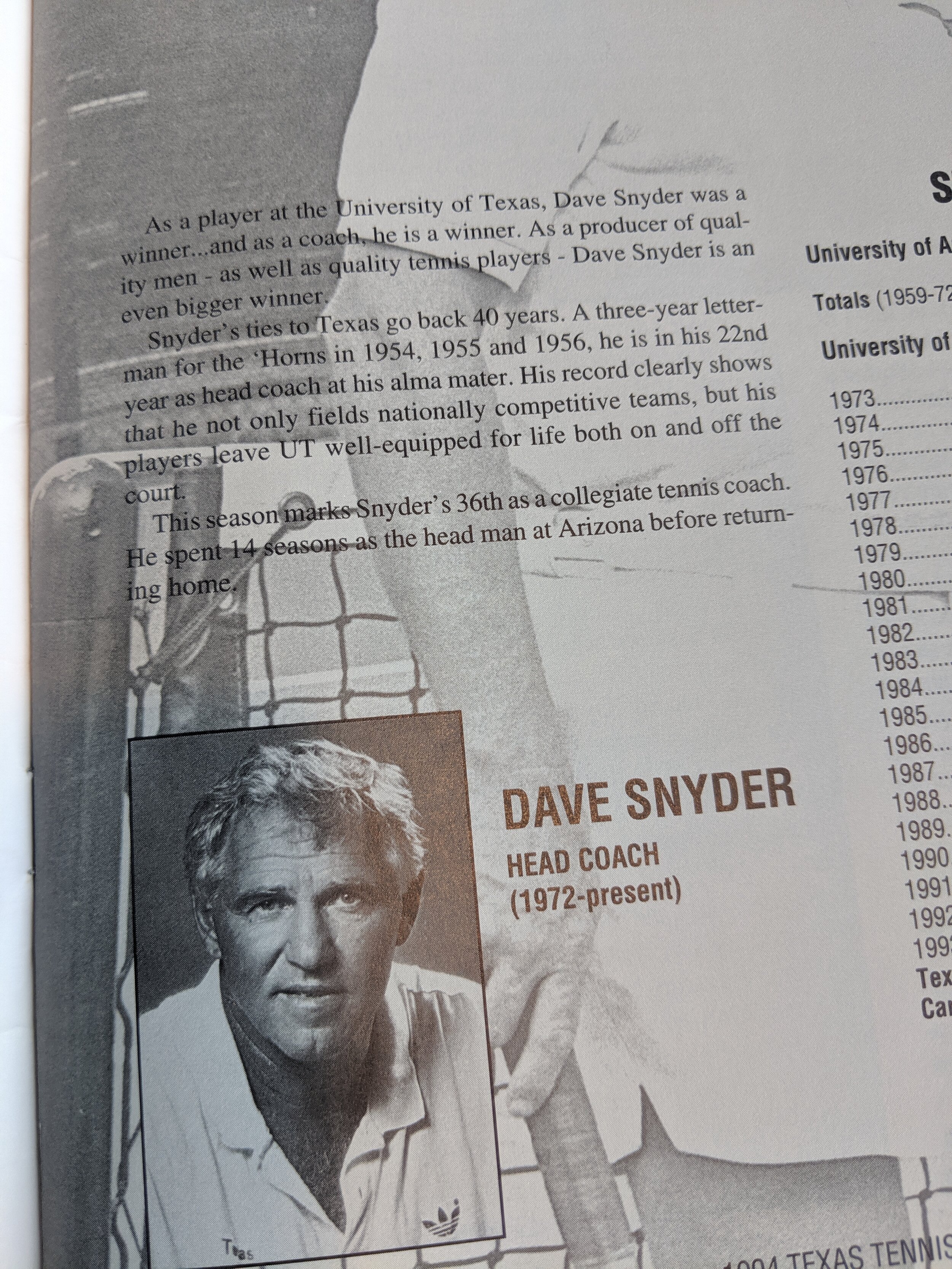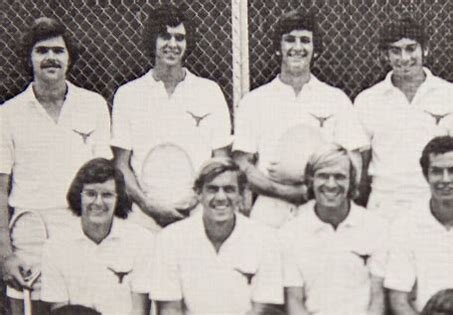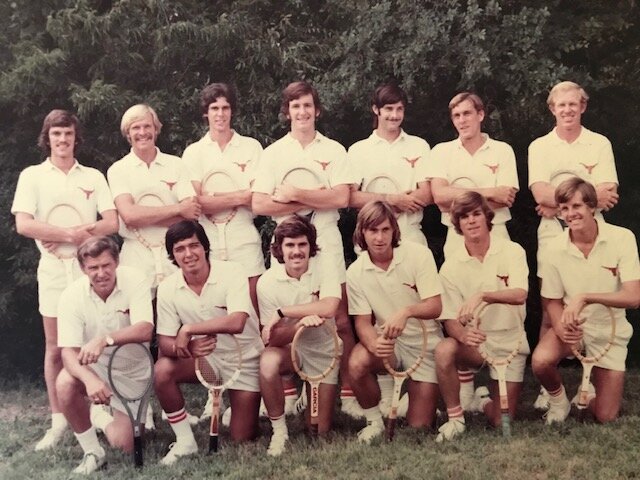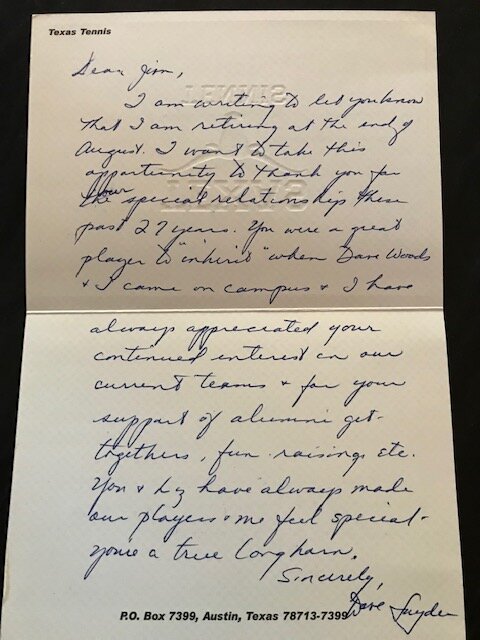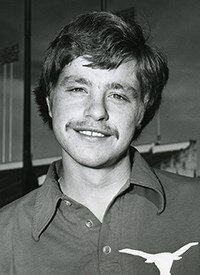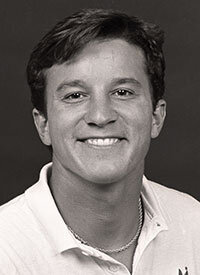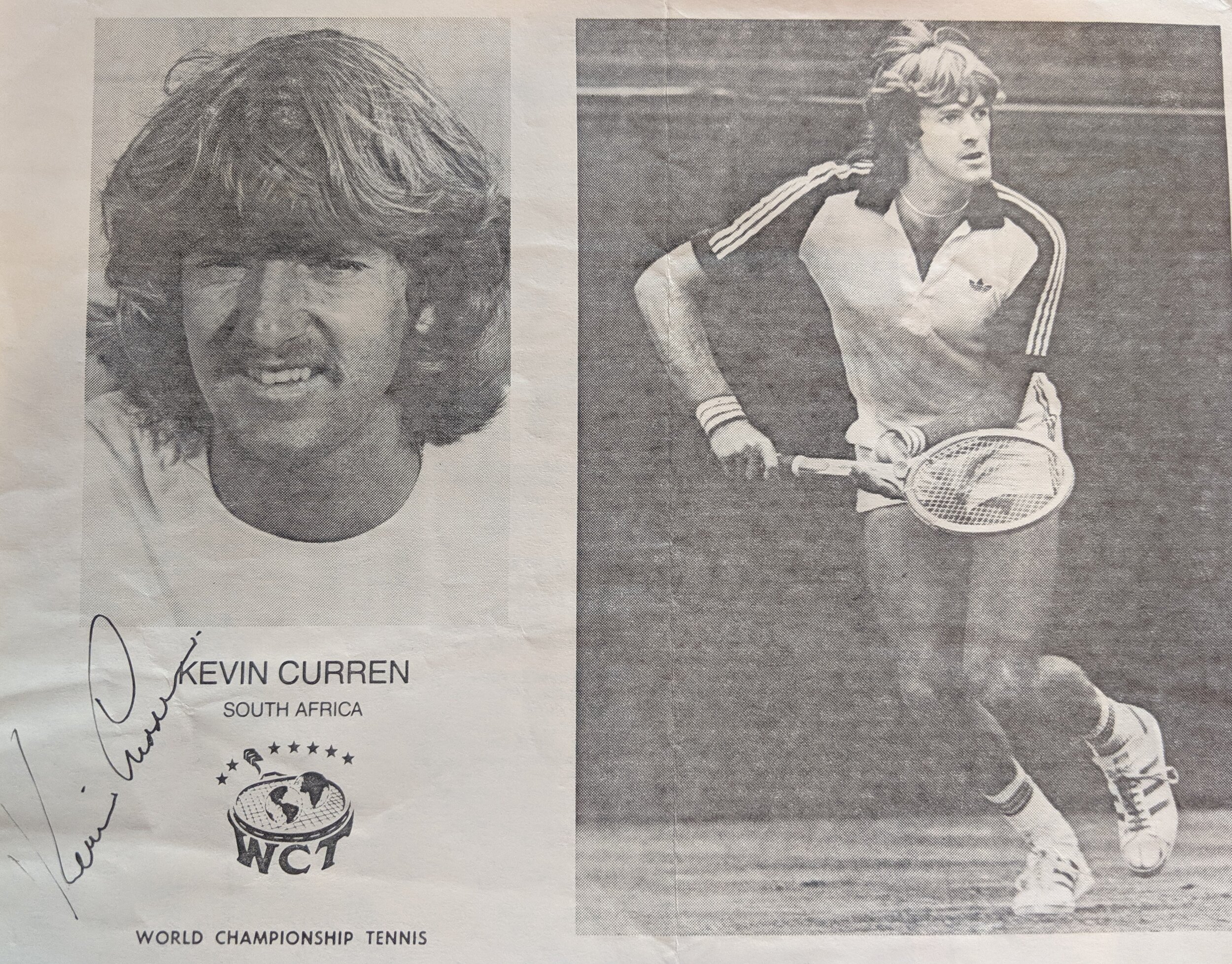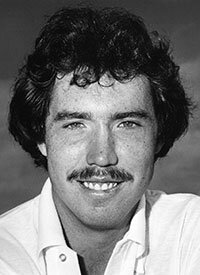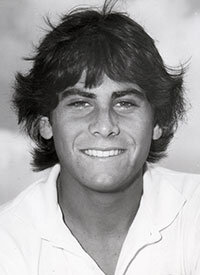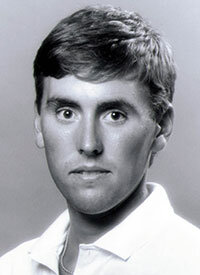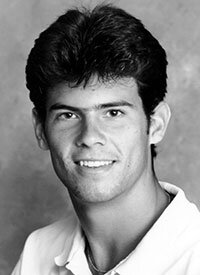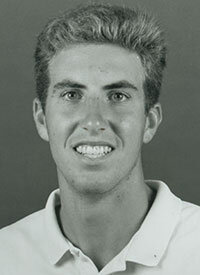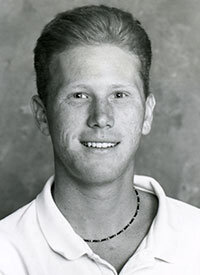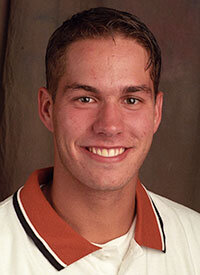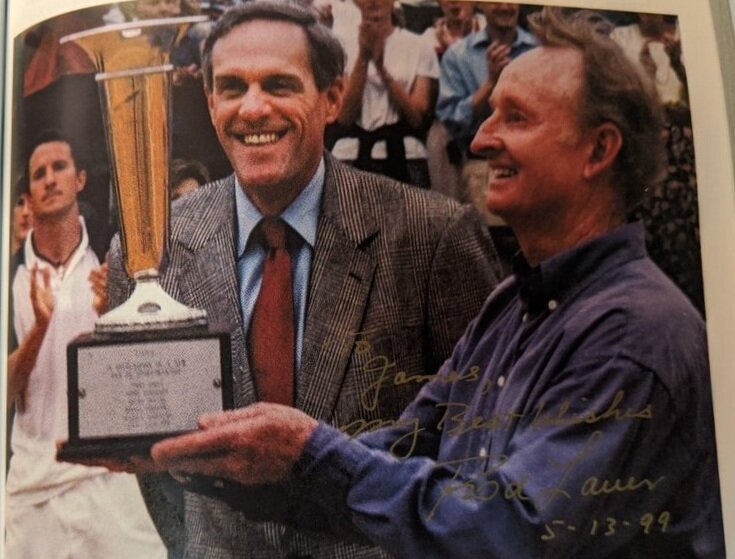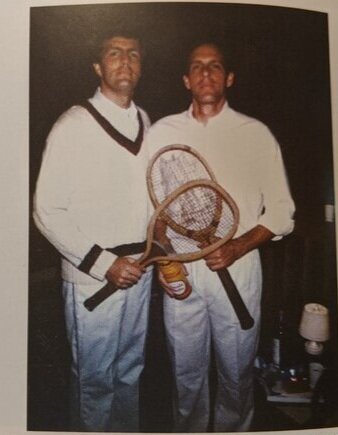Jim Bayless celebrates the history of Men’s Longhorn tennis in the podcast below.
Fall 1972: The Coach Dave Snyder Era at UT Begins
Longhorn Tennis Player and Coach Extraordinaire Dave Snyder
I well remember my first encounter with Dave Snyder as our new coach. Dan Nelson and I had been practicing at Penick Courts late one afternoon a few days before classes were to begin in our junior year. Coach stopped by the courts, not expecting to find anyone there, but was pleased to see the unlocked gate and hearing someone whapping balls. Dan and I greeted and welcomed him back to Austin and the University. We were well aware of his record as head coach at the University of Arizona, a perennial national power with his past stars such as Bill Lenoir, once ranked No. 13 in the U.S. with a win over Arthur Ashe some years before. We also were impressed that Snyder had a victory over Neal Fraser of Australia, the Wimbledon champion in 1960, and that he had earned a Ph.D. in kinesiology to boot.
Coach Snyder, his wife Nancy and their young children[19] had just moved from Tucson and bought a house they liked located at 3600 Ripple Creek Drive in West Lake Hills. I told him that the first time I had seen him was en route to breakfast at the NCAAs at Notre Dame in 1971. We exchanged pleasantries, said we looked forward to beginning formal practice in a few days, and then departed. Recalling the line in the film Casablanca, where Rick Blaine (Humphrey Bogart) said to Captain Louis Renault (Claude Rains) as they walked across the airplane tarmac, I said to myself, “Louis, I think this is the beginning of a beautiful friendship.” Little did Coach Snyder realize that his upcoming coaching career at his alma mater would endure for 28 sensational years and that he and Nancy would remain in Austin to this day, 48\ years later and counting.
Our team consisted of eleven players at the time, so Coach Snyder wanted to make it an even dozen, hence a little-known addition to our ranks that warrants special mention. I recommended a student who was a solid player with whom I had grown up playing in Houston. Snyder checked out this walk-on candidate and deemed him worthy. Good call, that: Jeb Bush pitched a perfect game, as it were, in singles play, finishing the season with an unblemished record.[20]
Under Coach Snyder, daily practice began, as usual, at 2:00 p.m. precisely, in the Penick-Allison tradition. Except this time, Coach Snyder, along with his trusty, good-natured assistant coach, Dave Woods[21] designed a heavy, fitness-oriented regimen for us, written out in Snyder’s perfect cursive on index cards thumb-tacked to the bulletin board, starting with lots of stretching and calisthenics, followed by 60 to 90 minutes of drills: running the lines, a variety of two-on-ones, “passers” (passing shots) and more, lots more. Coach Snyder, who must have taken his cues from Vince Lombardi, expected us to go all-out for every ball—lunging, if that’s what it took—as he once demonstrated to us by diving onto the hard court as if it were an airport runway. Trouble was, he had forgotten to remove the wad of keys in his pocket. When he picked himself up, we saw blood trickling down his leg! (Surely aware of the self-inflicted wound, there was no way he was going to let on, but the incident was enough for him to earn Bill Fisher’s sobriquet, “Jumpin’ Dave”).
[19] As a mark of the respect Coach Snyder had for Wilmer Allison, his and Nancy’s daughter is named Allison.
[20] When Jeb served as governor of Florida (1999-2007) and later as a candidate for the Republican nomination for president of the United States in 2016, many were surprised to learn that he had graduated from UT, much less that he had played varsity tennis there. But they wondered: Why did he play for only one season? The answer: Because Jeb, who majored in the demanding liberal arts honors program, Plan II, graduated from college in only two-and-a-half years. A brilliant fellow is he.
[21] Dave Woods later served as the head coach of the Lady Longhorns in the early ’80s, once a woman’s varsity tennis team came into being as a result of Title IX of the Educational Amendments Act of 1972, a federal civil rights statute that assures evenhandedness between genders in all education programs and activities including sports. In its relatively brief history, the Lady Longhorns have won the NCAA team championship twice, in 1993 and 1995, under former Coach Jeff Moore.
Page 15
Certain drills triggered playful rivalry among us. For instance, an overhead drill using small wooden targets had us subdivided into two teams. When a player on one side would nail one of the targets, everyone on the other side would have to do 20 kangaroo jumps (hitting our knees to our chests)—a fairly grueling penalty when the sharpshooters managed to hit the bulls-eye repeatedly. We would then play sets, singles and doubles, on a rotating basis each day. We would wind down practice with rapid-fire volleying drills with Snyder and Woods and then jog a couple of miles[22] around the track at Memorial Stadium before heading to the showers after the usual three-and-a-half to four-hour daily workout.[23]
Rinse and repeat, and we’d be ready to resume speed the next day. Make no mistake, we reveled in the routine, and were spurred on by our improvement, field-tested in the occasional fall tournament in Midland, San Antonio, Fort Worth and elsewhere. In the Penick-Allison-Snyder mold, we shared a love of the game and the will to win.
[22] The running component was accelerated and extended on one occasion that we will not soon forget. During preliminary calisthenics, one player whined about that day’s practice agenda, which mightily annoyed Coach Snyder. Instead of stretching, we were ordered by Coach Snyder to hit the track and run—and to keep running until he got tired! So we did, seemingly forever, for we had no idea when the finish line would be declared. Five miles later, we had to begin a full practice! Understandably, the offending teammate’s popularity among the ranks nosedived for days, causing him to give serious consideration to changing his identity and joining the witness protection program.
[23] During my junior and senior years, we somehow finagled a substantial improvement in dorm room comfort by shifting to Moore-Hill Hall (blessedly without our rambunctious football-player neighbors in Jester, many of whom could pass for sides of beef). Prior to the recent construction of Jester, Moore-Hill served as the athletic dorm. My room, M-H 164, was positively luxurious compared to those in Jester: a two-person bedroom, an adjoining study room and a full bath—with a parking spot just outside the side door and, just in case, a backup spot inside Memorial Stadium under a switchback stairwell. “Downton Abbey Dorm” on the Forty Acres! (Though that metaphor was not available in 1972, it was a posh residential circumstance for us knuckleheads.)
Page 16
Junior Season, 1973
The 12th Man
Texas Tribune of 3/17/2015, : https://www.texastribune.org/2015/03/17/jeb-bush-texas-years/.
In 1973 "When the varsity team needed a 12th player to make an even number, several members of the team recommended Jeb Bush to Coach Dave Snyder. After one practice, Snyder decided he could hang with the scholarship players." "Bush listed as a 6-1, 165-pound sophomore. He . . . tallied four singles wins, five doubles wins and zero losses."
Jim remembers that Jeb “was unfailingly polite and respectful.”
UT Upsets Trinity
To prepare for the regular spring schedule, we returned to Austin for intensive practice in early January—only to encounter, of all things, ice covering Penick Courts! But with apologies to the U.S. Postal Service, “Neither snow nor rain nor heat nor gloom of night shall stay us from the swift completion of our appointed drills.” So chip away at the ice we did, and then practiced on makeshift “courts” on the Tartan surface on the fifth floor of the stadium annex, Bellmont Hall, until Penick Courts were dry enough to return outdoors. Nonetheless, by the official start of the season, we were ready.
Except for ice, that is, which bedeviled us once more as we headed off in our UT station wagon for Edinburg in the Rio Grande Valley to play Pan American University. Unfortunately, we never made it. In gloomy weather we hit a patch of ice on the highway near San Marcos and slid helplessly into the car in front of us, all but totaling the car, but thankfully without injury to ourselves. Coach Snyder, Graham Whaling, Dan Byfield and I were fetched back to Austin to fight another day.
No matter, because we came out of chute No. 1 over the next few weeks, aided by a couple of practice sessions with two world-class players on the pro tour, Cliff Drysdale of South Africa and Bill Bowrey of Australia, who practiced with us when in Austin[24] We racked up some unexpected wins over some formidable opponents nationally, saturated with the usual foreign talent. In order, we upset Pan Am by 7-2 and the University of Corpus Christi by 6-3. In these two dual matches I was pleased to pick up wins over opponents who played Davis Cup for Ireland and the Netherlands, respectively[25] We leapt out to a 7-0 record by early March. After narrow losses to favored University of Houston and foreigner-dominated Oklahoma City University, the big enchilada came our way on March 10. We upset Trinity University, the defending NCAA champion, at home in a cliffhanger, 5-4[26] When we clinched the ninth and deciding match, an airborne Coach Snyder sailed out of the stands onto the courts!
In conference play we edged out perennial power Rice University on the road, 4-3. After a couple of other wins, we squared off against SMU, rich in Californian and Australian talent and heavily favored, in Dallas. Rain all day forced us indoors at Brookhaven Country Club that evening. Down 2-3 after the singles (including a big win by Ron Touchon over the hard-hitting and aptly named Woody Blocher), we won both doubles matches to give UT a 4-3 upset victory, finishing well after midnight—and then celebrated back at our hotel.
Alas, the three-way tie in the SWC among SMU, the University of Houston and Texas would be resolved to our disadvantage when we lost badly to U of H by 6-1 at Penick Courts. Though the win-loss record of each school in dual matches was tied at 5-1 apiece (including our finale in which we again “sent the Aggies home, crying like babies,” as Wilmer unforgettably put it), the deadlock was broken and resolved by tallying up individual matches cumulatively, believed to be a new innovation, which put UT third in the final conference standings. (I doubt that the methodology of tallying up cumulative game points would be followed in the case of a team tie in SWC football, baseball or basketball.)
After final exams, we hit the road for our summer tournaments as usual. First stop was the Blue-Gray tournament in Montgomery, Alabama, once again as a tune-up for the NCAA championships, this year hosted by Princeton University. After the Blue-Gray, we had an idle week before the NCAAs were to begin. Since our route would take us through Washington, D.C., after an overnight stopover in Atlanta, I phoned George Bush, a longtime friend of my family and our teammate Jeb’s dad, who was then chairman of the Republican National Committee, simply to say hello and that we would be coming through town before we had to be in New Jersey several days later. To my pleasure, but not surprise, the ever-gallant Mr. Bush insisted that, if we had leeway, we should stay in Washington for a couple of days. Our traveling road show, comprised of Dan Nelson, Graham Whaling, Bill Fisher and me, quickly agreed.
[24] We also were aided by an unusual home-court advantage: the ear-splitting jackhammers at work in the construction of the upper deck on the west side of Memorial Stadium just yards away from Penick Courts. Our out-of-state opponents in particular could barely abide the noise, which didn’t bother us at all. The constant racket had caused all of us to go deaf months before.
[25] About to serve for the match in the final set of his and my tight doubles match against UCC (Carlos Alvarado of Bolivia and Ken DeKoning of Dutch Guyana [Suriname today]), and with a flair for the dramatic, Bill Fisher quelled the anxious fans at Penick Courts and broke the tension (at least my tension) by intoning, “QUIET PLEASE.”
[26] Granted, Trinity had lost to the pro ranks and graduation virtually all of its superstars of the year before who had dominated national intercollegiate tennis for years. It is also true that Trinity gave us a spanking later in the season in San Antonio.
Page 17
The White House Tennis “Distraction”
Barbara Bush made reservations for us at a hotel and invited us to a casual supper at their home the night we arrived. The next day, June 14, Mr. Bush arranged for us to attend the Watergate hearings that were spellbinding to Washington and the rest of the world. It was an uncommon way for Dan to celebrate his 21st birthday and an unexpected opportunity for Bill to meet Senator Edmund Muskie of Maine on the Senate steps (and vice versa, surely). We spent several hours seeing the sights of Washington before practicing that afternoon at the Chevy Chase Club as the Bushes’ guests, followed by dinner there that night with Mrs. Bush and son Marvin.[27] But that day was just the warm-up act for what was to follow.
But a win is a win, and we’ll take it, notwithstanding this admission buried by footnote.
[27] Little did I realize at the time that five years later, following law school, I would end up working in the nation’s capital myself for a “mere” 33 years, the bulk of my professional career.
Page 17
White House, 1973 -
Dan Nelson (left), Graham Whaling (with back to the camera) talking to George W. Bush.
In front is Bill Fisher with George H.W. Bush
The next morning we continued our Washington tourism. Mr. Bush had asked us to pick him up at the RNC office on Capitol Hill at 3:30 p.m., which we dutifully did (thankfully on time despite sustaining a fender-bender en route while I was driving Graham Whaling’s mother’s car). Our next stop: the White House! Upon our arrival at the southeast gate, the guards directed us to follow the driveway across the South Lawn and park on the secluded far end next to the little-known and completely hidden First Court of the Land. We couldn’t believe where we were. But first, Mr. Bush walked us over to the fountain on the South Lawn to take photos of us with the White House as a suitable backdrop.[28] (We had made a point of wearing our “dress white” Longhorn tennis shirts for the occasion, you bet.)
We then repaired back to the White House court for round-robin doubles that included Mr. Bush and son Neil. Arriving shortly thereafter was son George W. Bush, at the time a graduate student at Harvard Business School, who had popped into town. We snapped lots of pictures as we kibitzed at courtside with everyone before dining once more with the Bushes at their home again that evening.
As speechless as we were over the events of the previous 48 hours in the nation’s capital under the Bushes’ wing, another thought occurred to us some 28 years later: As unforeseeable as it was for those Secret Service gendarmes to eject a future president from the South Lawn, we four Longhorns were gobsmacked, as the British would say, to note that on that day we had been in the frolicking company not of one future president of the United States but two!
[28]In one of the all-time ironies, Mr. Bush and we were shooed off the South Lawn by uniformed Secret Service officers, angry that we would have the effrontery to be there. That our host would be residing at 1600 Pennsylvania Avenue, NW, himself as president sixteen years later probably did not dawn on them.
Page 18
The 1973 NCAA Tournament and a No. 11 National Ranking in Coach Snyder’s Debut
We drove on to Princeton the next day, amazed at having been spoiled rotten by such preferential treatment just days prior to the biggest tournament of the season. It was no wonder, then, that Coach Snyder expressed bewilderment at our somewhat distracted state of mind as a result of our Washington experience when we arrived at Princeton for practice. When we explained to him what had happened, he took it all in but reminded us of what we were there for. We needed no reminder. Business first.
The day before the tournament was to begin, the afternoon weather forecast called for rain, so Coach Snyder awakened us at 6:15 a.m. and had us on the courts by 7:00 a.m. for a full practice, after which we adjourned for breakfast. (No surprise, the forecast was wrong. Sunny skies after lunch meant that we had two-a-days, with another full practice that afternoon!) Alas, the tournament was jinxed, weather-wise, from the beginning, as it rained for five days straight. Fortunately, Princeton’s Jadwin Gym had indoor courts located five levels below ground to accommodate all matches during the monsoons. After the tournament went outdoors, Nelson and Whaling—perhaps channeling Wilmer Allison’s comeback win over Italy’s Giorgio di Stefani in the 1930 Davis Cup tie—beat Clemson University’s Pakistani doubles team 4-6; 6-3; 7-6 after being down 1-4 in the third set tiebreaker. Cool under pressure indeed.
Jim Bayless defeats Ken deKoning, University of Corpus Christi and Davis Cupper for Suriname, 1973
Thankfully, we acquitted ourselves well in the NCAAs by finishing No.11 in the nation, with a cumulative win-loss record of 25 and 4 for the season in dual matches. Statistically, each member of the team won at least two-thirds of his matches, with team captain Dan Nelson at No. 1 singles winning three-quarters of his. Fisher and I did likewise in doubles.
All in all, not a bad showing for the team and Dave Snyder’s debut as the Longhorns’ head coach.[29] Ever since that first day the previous fall, we had felt a certain sympathy for him, inasmuch as he had inherited practically all of us and recruited almost none of us. To him, we must have seemed like a modern-day (though arguably more docile) “Dirty Dozen.”
Once we were out at the NCAAs, we continued our “See the USA in Your Chevrolet” tour by dropping off Coach Snyder at the Newark airport that night and then, in typical sleep-deprived college fashion, driving nonstop back to Montgomery, Alabama, to pick up Fisher’s car, which we then drove to the Florida Panhandle to visit our gracious host family in Montgomery at their summer home for a couple of days. Then it was back to Texas, but only for a bit. We then loaded up for another run on the Pacific Northwest circuit, again by car (how else?). After tackling the same series of tournaments as before for a month, we headed back to Texas.30]
[29] All told, during his 41-year college coaching career, Snyder coached an astounding thirty-three All-Americans at Arizona and Texas and accrued a combined win-loss record of 697-226 in dual matches, placing him among the game’s greatest of all time. In 1962, just four seasons after he began coaching, Snyder was named the coach of the U.S. Junior Davis Cup team, a team led by Arthur Ashe. Once he was well into his career at UT, with several teams of his own choosing under his belt by then, he was honored as the National Coach of the Year in 1985 by the Intercollegiate Tennis Coaches Association. True to form, he had revealed to almost no one beforehand that the award was in the works.
[30] In Wyoming, we stopped off in Yellowstone National Park where a tennis friend of ours from Wichita Falls was working as a park ranger. In our freewheeling, freeloading style, we managed to bunk with some of her ranger friends that night in a sprawling ranch house near the Grand Tetons that was part of the movie set for the film Spencer’s Mountain, starring Henry Fonda. This followed an afternoon of touring Yellowstone, where my dauntless doubles partner Bill Fisher, angling for a good snapshot for his photo album, stalked a cow moose! Had the beast turned on him suddenly, I fear that Bill may have gotten the “quiet” he had once sought on the court, albeit in a more eternal sense.
Page 19
Senior Season, 1974
Returning to UT for my final year at Texas, I was pleased that our team remained intact with the exception of Ron Touchon, who had graduated. That loss was compensated for by three outstanding freshmen, Gonzalo Nuñez of Guayaquil, Ecuador (a real foreigner for a change), Stewart Keller of Phoenix, and Brad Nabers of San Antonio. Keller had a strong serve-and-volley game, and Nuñez had great hands and a deft touch, staple features of Latin American players raised on red clay (not to mention another Latin characteristic as a world-class Romeo after-hours).
Our results for the spring season essentially mirrored those of the previous year. We thumped the University of Tennessee (ranked below us at No. 14 the year before) at home mid-season and went on to defeat all SWC opponents but two, our nemeses SMU and the University of Houston. The latter was led by hard-hitting Californians and a cunning Englishman who later played on the ATP Tour[31] Regardless, it was gratifying that in my final dual match as a Longhorn, we whipped Texas A&M in College Station, once again “sending those Aggies home, crying like babies.”
Our tennis program was enhanced in a more glamourous direction that year by the creation of the Match Mates program, an innovative measure to enhance team spirit by having co-eds assist with the usual setting-up chores and calling the scores from the umpire chairs. Some team members returned the favor by fostering personal relationships with the Match Mates after hours as well (and in later years, even marriage!). Meanwhile, fellow senior Dan Nelson, who received the Allison and Littlefield Awards for leadership and scholarship that spring, and I were “distracted” a bit by the law school admissions process and our duties as members of the Texas Cowboys, an honorary service organization, a rare outside endeavor in which we had time to participate between academics and athletics.32]
Replenishing the ranks is always a priority in terms of recruiting the right players for future years. One candidate that Coach Snyder had his eye on was a little lefty from Louisville named Gary Plock, whom he invited to visit the campus in April 1974. Gary was instantly impressed with the UT tennis program and its reputation and, aided in part by the conviviality and positive influence that hops and barley can bestow, signed with the Longhorns soon thereafter. Gary went on to play No. 1 for Texas for four straight years.
Down the ladder on those teams were two other notables in the annals of UT tennis, Kevin Curren of Durban, South Africa, and Steve Denton of Driscoll, Texas. Kevin went on to win the NCAA singles title in 1979 at Texas and reach the singles final at Wimbledon in 1985, crushing Stefan Edberg, Jimmy Connors and defending champion John McEnroe in succession, each in straight sets, and never dropping his serve. He attained a career high singles ranking of No. 5 in the world. Meanwhile, Steve Denton reached the singles final at the Australian Open twice. Together he and Curren won the U.S. Open doubles championship in 1982. Needless to say, Coach Snyder had a keen eye for talent, whether from down the road or across the globe.[33] Though Dan Nelson and I were soon to graduate and hand off the baton to our teammates and new recruits, we were confident that the team would prosper after we were long gone
[31] The Longhorns had Cougar Ross Walker of Great Britain surrounded eventually: Thirty years later, his son Scotty saw the light and played for UT, lettering in 2002-04, as had Ross’s father-in-law, Bobby Goldfarb, a three-time SWC doubles champion under Dr. Daniel Penick in 1947-49.
[32] Coach Snyder was a Texas Cowboy himself as a student at UT as well.
[33] In addition to his stellar play, Gary Plock is also a tennis historian extraordinaire. Plock, Curren and Denton are enshrined in the Longhorn Hall of Honor, alongside their coach and mentor Dave Snyder, as is Wilmer Allison, and of course the gentleman who served as their coach, Dr. Daniel Penick.
page 20
Fast Forward
Sadly, Wilmer Allison passed away at age 72 on April 20, 1977, less than five years after his retirement. He was buried at Austin’s historic Oakwood Cemetery in the plot of his widow Ann’s (née Caswell) family.[34] Following the service, Mrs. Allison graciously gave some of Wilmer’s several silver trophies he had won over his remarkable tennis career to those of us who played for him. His legacy lives on not only in the vast collection of his personal papers on file at the Stark Center, UT Athletics’ impressive sports museum, but in the minds of each of us who remember him fondly—and who can’t help retelling the many amusing stories about him whenever at least two of us are together.
Just four days before his death, Wilmer had been honored at a reception in the T Room, which a number of his past players attended, to commemorate the addition of his name to that of his revered coach, Dr. Daniel Penick. The venue for UT varsity tennis now read “Penick-Allison Courts.” It was an honor most fitting to both gentlemen. Just as Dr. Penick had instilled principles of the highest ethics, personal conduct, and sportsmanship in Wilmer Allison and countless other varsity tennis players at the University of Texas for over half a century, so too did Wilmer perpetuate those same teachings to the many players under his guidance as head coach for 15 years. These values were carried on and reinforced in us in turn by Coach Snyder, likewise a protégé of “the Doctor,” as a baton handed off from one to the next and to the next across the generations. Their stealth vehicle for doing so may have been the game of tennis, but the lasting value of our experiences under both coaches is rather in those important life lessons.
It turned out that I was alongside some pretty distinguished company among those of us who played under Wilmer Allison in his last two years of coaching and Dave Snyder in his first two. Many went on to enjoy successful professional careers in such diverse fields as medicine (pediatrics, ophthalmology, anesthesiology and pain management specialties), law, public service, petroleum engineering and land management, energy finance, finance and investments, employee benefits and dentistry, among others.[35] Of special note, my former teammate and roommate Graham Whaling has been exceptionally generous in returning the favor of his experience at UT through a gift that enabled the indoor tennis facility that today’s Longhorn and Lady Longhorn varsity teams enjoy, located at the UT Golf Club.
Furthermore, most of us still play tennis—a sport for a lifetime after all—perhaps because it has been so ingrained and programmed in us since our early youth that we simply can’t stop.[36] (My former teammate Dr. Ray Rhodes, recently retired, is playing state tournaments in the 70-and-over age bracket, as just one example.) Not only that, but most of us are in touch with one another to this day, some fifty years later, as well as with those who played in the decades before or after our years—including one jaunty gent, Travis Smith, who lettered under Dr. Penick in 1948, over seventy years ago!
[34] The Caswell name will be familiar to anyone who has ever played tennis in Austin. Mrs. Allison’s father, William Thomas (“Will”) Caswell, who ran one of the largest cotton export businesses in the South, personally designed and shared a portion of the expense of building tennis courts and a clubhouse at 24th Street and Lamar in Austin, the Caswell Tennis Center.
[35] This was not uncommon in the annals of Longhorn tennis: There have been many who preceded or followed my crew who have excelled in these and other endeavors in addition to the many tennis accomplishments mentioned in these pages.
[36] If only our contemporaries in the major sports could say the same thing. But whether we play well or poorly nowadays, and regardless of our ages or sports, we all have the same rallying cry: “The older we get, the better we WERE.”
* Enshrined in the Longhorn Hall of Honor.
page 21
Epilogue
For me and my teammates, it is a source of pride to have played for the University of Texas under Coaches Wilmer Allison and Dave Snyder, his hand-picked successor, whom we all respect equally not only as a tennis coach but as a role model for his competitive zeal and humility. These two men gave us far more than the satisfaction of athletic achievement and the memories that go with it. They also slipped into the program life lessons unnoticed by many but which count the most because they spill into other pursuits that are more lasting. Not the least of these are competitive desire, decorum and good sportsmanship, winning with understatement, losing with grace, self-reliance and team responsibility. Thanks to these gentlemen, and the hundreds of Longhorn players before, during, and since their time, UT varsity tennis has set a standard and provided a network of friendships that is a gift that keeps on giving.
My four years as a member of UT’s varsity tennis team under Coaches Allison and Snyder gave me an education, in tennis as well as in life, which was unimaginable to me prior to my arrival on campus as a freshman in 1970. The guidance and example these men provided to my teammates and me in their ultimate mission to build character—to mold young men for good—were invaluable, for which I think of them, and thank them, every single day.
Yet the memories I revive here, offering the experiences and perspective of a single participant in just one four-year slice of a century-long Longhorn tennis program, represent only one pebble in an elaborate mosaic. For this reason, I encourage my fellow members of the herd to complement this account with reminiscences drawn from their respective eras at UT to round out the portrait. Through their recollections and mine offered here, may the reader as well as future teams come to know and appreciate the character, culture and camaraderie of the rich and colorful heritage of tennis at the University of Texas
page 22
Coach Dave Snyder (16) all Americans
· Nick Crowell, 1997 (doubles), 2000 (doubles) No photo
· Michael Blue, 2000 (doubles) No photo
_________________________
* Enshrined in the Longhorn Hall of Honor.
Moments where being a Longhorn tennis player intersected with greatness in Jim’s professional life.
XXXXXXXXXXXXXXXXXXXXXXXXXXXXXXXXXXXXXXXXXXXXXXXXXXXXXXXXXXXXXXXXXXXXXXXXXXXXXXXXXXXXXXXXXX
